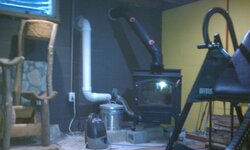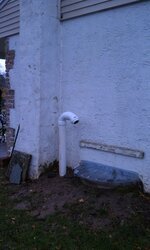I installed a 30 nc in my basement and let it go out after a couple day burn. Now my basement stinks like soot horribly, and not the normal wood smoke smell, it's potent. I did/do have a problem with creosote I believe, probably from burning wet wood, at least that's what I've gathered from a previous post. I can open the stove and feel a bit of a down draft with the stove shut down. Is that y I am getting this pungent odor? Any ideas how I can correct?
Smell in basement
- Thread starter sowers25
- Start date
-
Active since 1995, Hearth.com is THE place on the internet for free information and advice about wood stoves, pellet stoves and other energy saving equipment.
We strive to provide opinions, articles, discussions and history related to Hearth Products and in a more general sense, energy issues.
We promote the EFFICIENT, RESPONSIBLE, CLEAN and SAFE use of all fuels, whether renewable or fossil.



